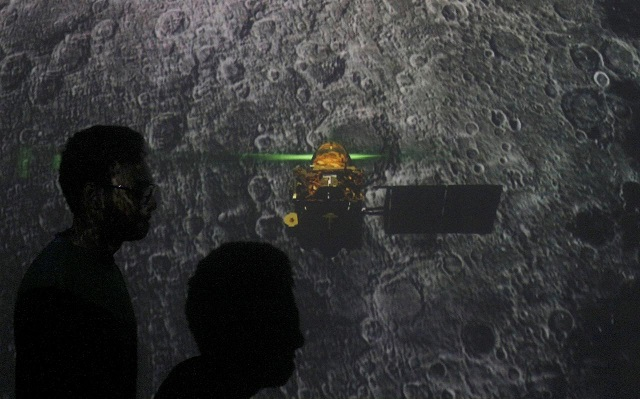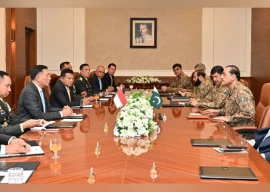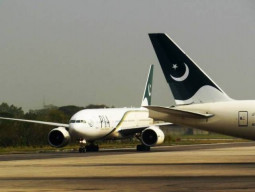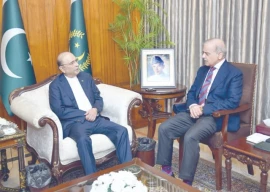
The lander of India's Chandrayaan-2 moon mission was attempting a "soft," or controlled, landing near the south pole of the moon where scientists believe there could be water ice.
ISRO lost communication with it just as it was about to land on the moon.
"Data is being analysed," ISRO Chairman K Sivan told a room full of distraught scientists at the agency's tracking centre in Bengaluru.
The Indian designed spacecraft, which had been orbiting the moon, began descending towards the lunar surface but scientists lost contact with it during the penultimate stage of the descent.
India counts down to new bid to launch Moon mission
"Vikram lander descent was as planned and normal performance was observed up to an altitude of 2.1 km. Subsequently, communication from Lander to the ground stations was lost," an ISRO official said.
The lander was named Vikram after the father of India's space program, Vikram Sarabhai.
A live broadcast from ISRO, India's equivalent of NASA, showed scientists grow tense and the floor fall silent as the control station struggled to get a signal from the lander.
"There are ups and downs in life ... What you have accomplished is no small achievement," Prime Minister Narendra Modi, who was present at the ISRO centre, told scientists after being briefed by Sivan.
 India's Prime Minister Narendra Modi interacts with the scientists of Indian Space Research Organisation (ISRO) at its headquarters in Bengaluru. PHOTO: REUTERS
India's Prime Minister Narendra Modi interacts with the scientists of Indian Space Research Organisation (ISRO) at its headquarters in Bengaluru. PHOTO: REUTERSThough ISRO had not released any official update, Modi in a subsequent formal address to the scientists and the nation hinted that the lander might have travelled at a higher-than-expected speed and crash landed on the moon.
"If historians some day write about today's incident, they will certainly say that inspired by our romantic description of the moon throughout life, Chandrayaan, in the last leg of the journey, rushed to embrace the moon," he said.
‘The world was watching’: US commemorates Apollo mission 50 years on
Modi said that though India "came very close" it needs to "cover more ground" in the times to come. "I can proudly say that the effort was worth it and so was the journey."
In an emotional moment broadcast on TV channels, Modi embraced and consoled a visibly heart-broken Sivan.
"We are full of confidence that when it comes to our space program, the best is yet to come," Modi said.
Sivan had earlier described the final moments of the landing mission as "15 minutes of terror," due to the complexities involved with lunar gravity, terrain and dust.
 Devotees worship an idol of the Hindu god as a model of India's Geosynchronous Satellite Launch Vehicle Mk III-M1, which carried Chandrayaan-2. PHOTO: REUTERS
Devotees worship an idol of the Hindu god as a model of India's Geosynchronous Satellite Launch Vehicle Mk III-M1, which carried Chandrayaan-2. PHOTO: REUTERSOnly the United States, Russia and China have landed on the moon. Beijing's Chang'e-4 probe touched down on the far side earlier this year.
Israel made an unsuccessful attempt to land its Beresheet spacecraft on the moon in April.
The south pole is believed to contain water as craters in the region are largely unaffected by the high temperatures of the sun. ISRO had hoped to confirm the presence of water in the form of ice, first detected on its mission in 2008.


















COMMENTS
Comments are moderated and generally will be posted if they are on-topic and not abusive.
For more information, please see our Comments FAQ